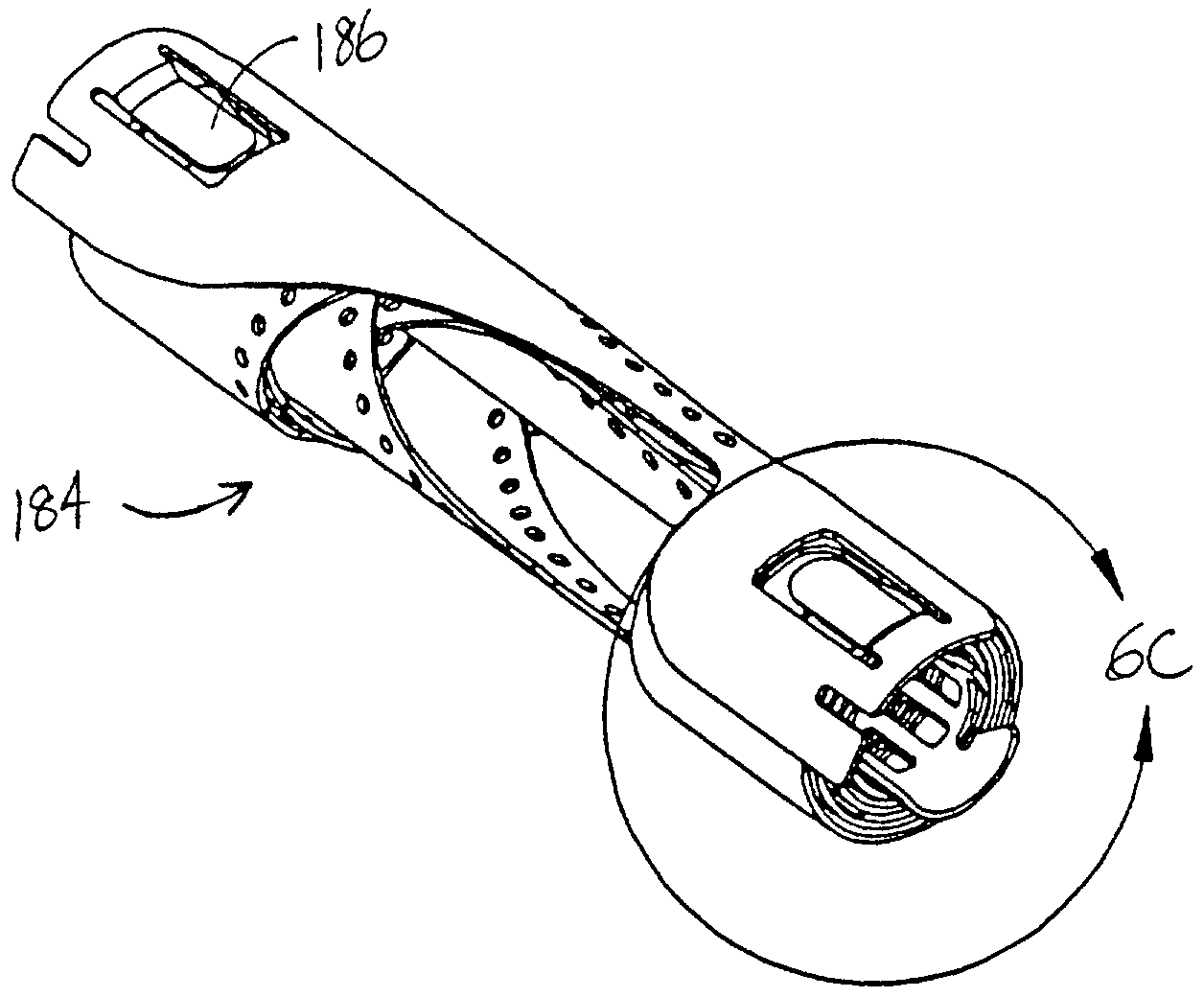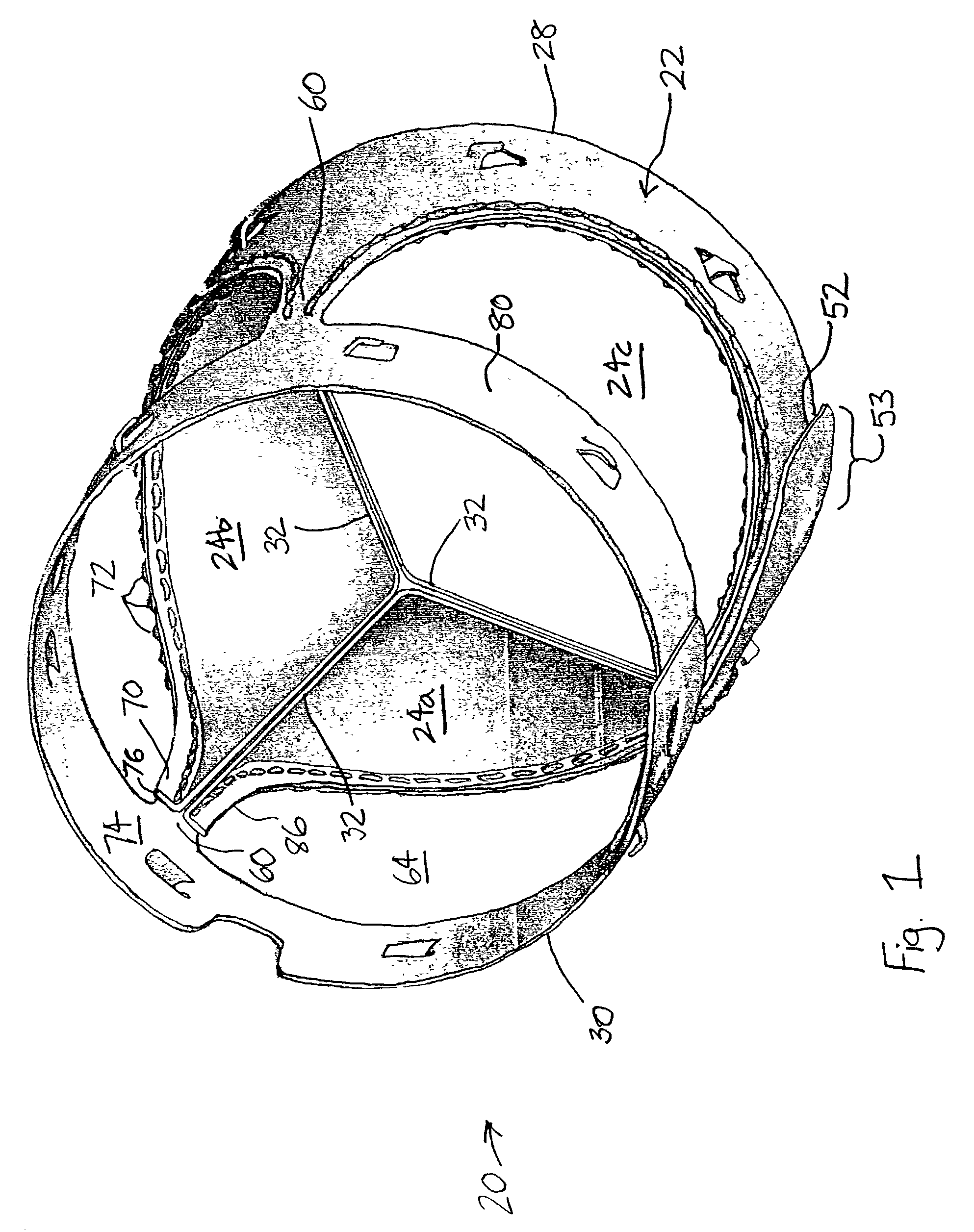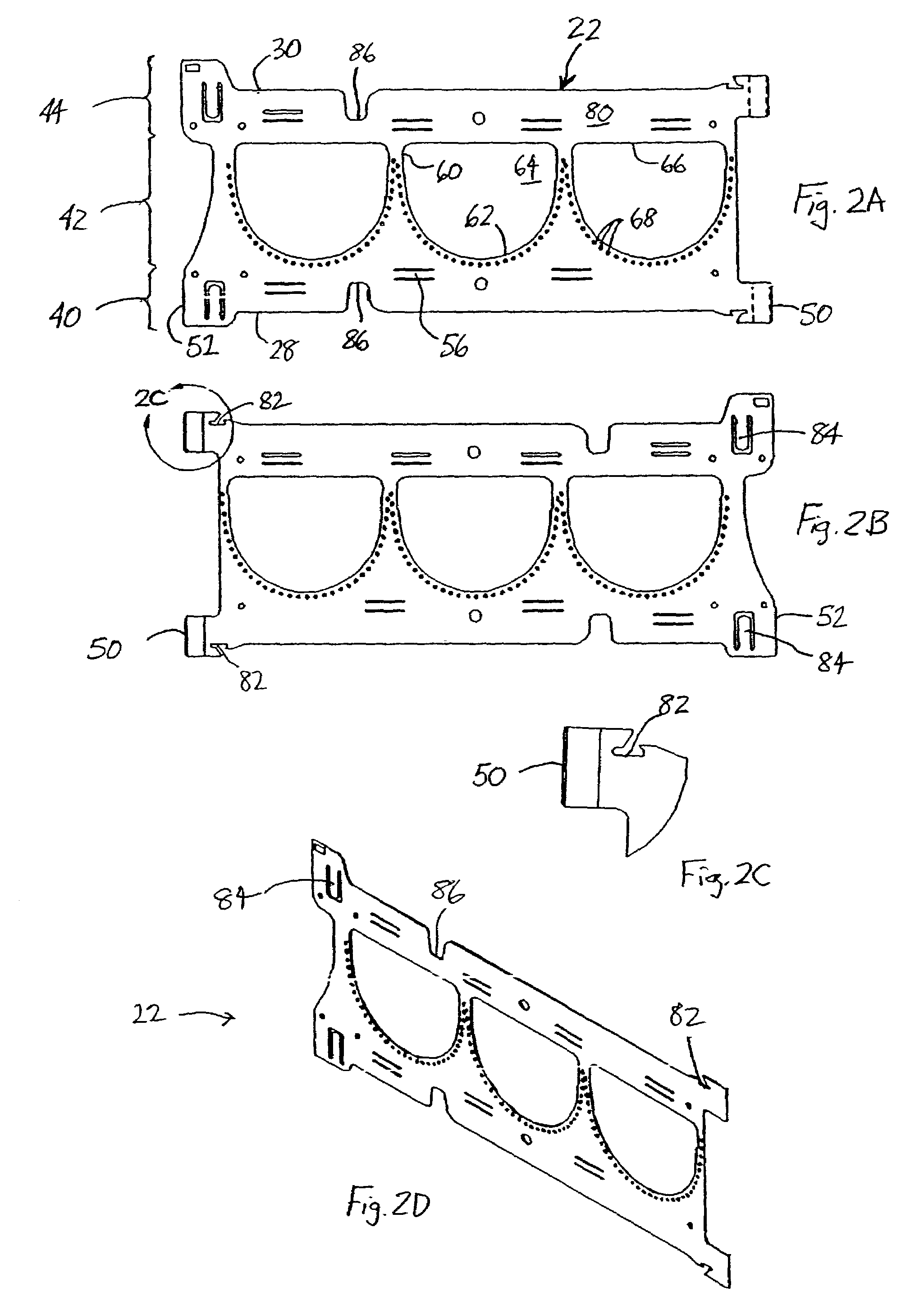Rolled minimally-invasive heart valves and methods of manufacture
- Summary
- Abstract
- Description
- Claims
- Application Information
AI Technical Summary
Benefits of technology
Problems solved by technology
Method used
Image
Examples
Embodiment Construction
[0039]The present invention discloses a number of expandable heart valves for implantation in a host annulus, or host tissue adjacent the annulus. The valves may be implanted in any of the four valve positions within the heart, but are more likely to be used in replacing the aortic or mitral valves because of the more frequent need for such surgery in these positions. The patient may be placed on cardiopulmonary bypass or not, depending on the needs of the patient.
[0040]Although the present invention is illustrated with self-expandable rolled heart valves, those of skill in the art will recognize that certain features may be useful for plastically deformable rolled heart valves. Moreover, the invention described herein embodies certain features that may be adapted to be used with minimally-invasive heart valves other than the rolled type. For example, the configuration that the valve expands to a fixed diameter is useful for all valves, not just the rolled type.
[0041]A number of exp...
PUM
 Login to View More
Login to View More Abstract
Description
Claims
Application Information
 Login to View More
Login to View More - R&D
- Intellectual Property
- Life Sciences
- Materials
- Tech Scout
- Unparalleled Data Quality
- Higher Quality Content
- 60% Fewer Hallucinations
Browse by: Latest US Patents, China's latest patents, Technical Efficacy Thesaurus, Application Domain, Technology Topic, Popular Technical Reports.
© 2025 PatSnap. All rights reserved.Legal|Privacy policy|Modern Slavery Act Transparency Statement|Sitemap|About US| Contact US: help@patsnap.com



